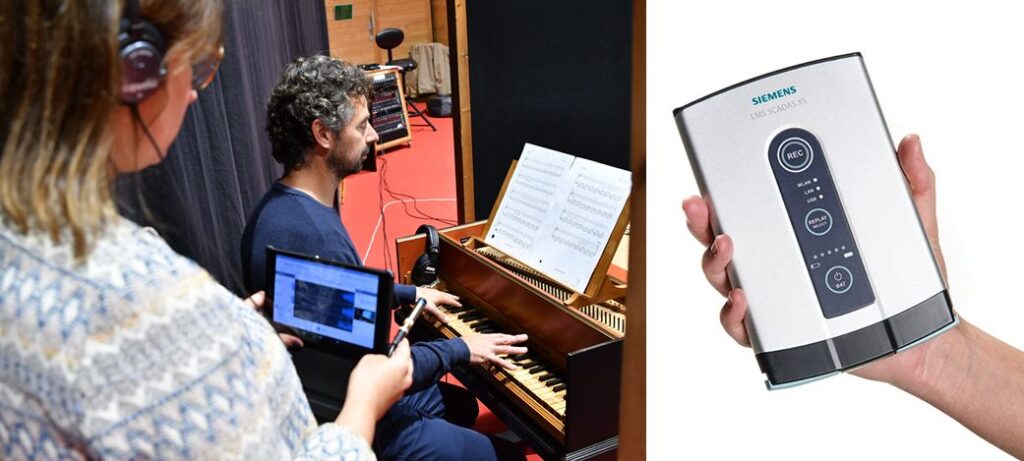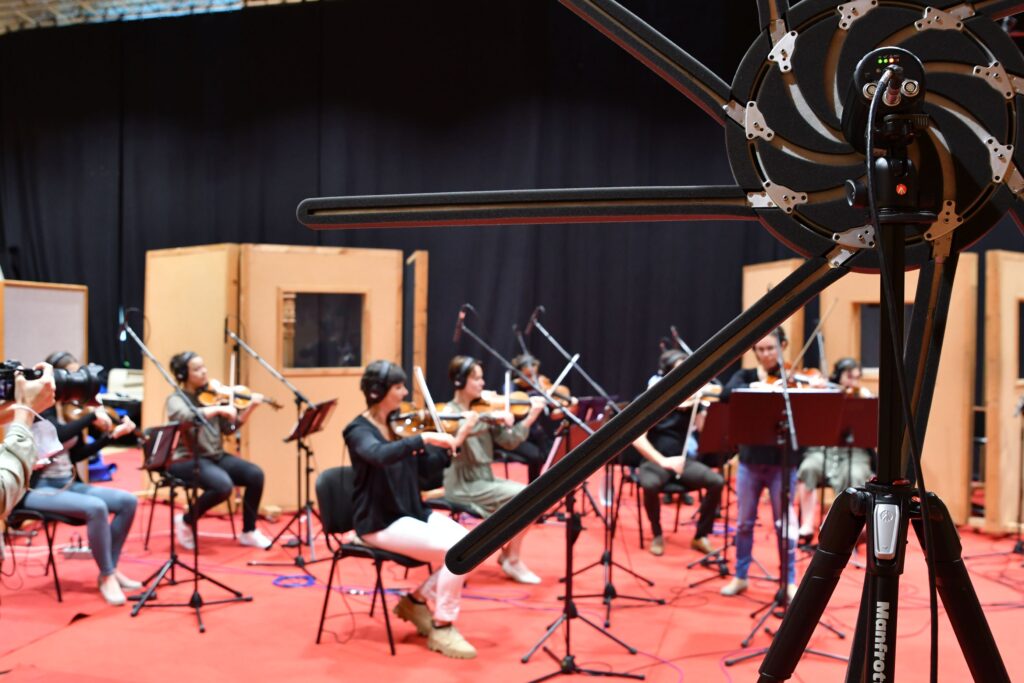The science of music

Although I think that music is a lot more than science, you cannot ignore the fact that it is all based on physics. Physics that explain how the sound and vibration of individual instruments and voices come together in a nice piece of art. Probably that is the reason why a lot of good musicians are often good scientists. Did you know that Albert Einstein was an accomplished pianist and violinist, and that Brian May has a PhD in Astrophysics? A nice illustration of this link between music and science is given by Nigel Stanford, a composer from New-Zealand. Checkout this video and see if you can recognize the different physical phenomena in the clip.
Recording music binauraly
Recently, I had the occasion to do some sound and vibration measurements on a full classical orchestra. I wanted to understand and visualize how different instruments generate different frequencies, timbres, pitches … throughout the musical piece.
First off, we used the Simcenter SCADAS XS. With its binaural headset, you record the sound of the orchestra as experienced by the human being. The extreme mobility of the SCADAS XS allowed us to move around and get closer to each individual instrument.

You can replay the recordings on the device itself, or open them in the Simcenter Testlab Neo desktop. As you can see, it is extremely easy to select the data, start an audio replay, combine it with video and calculate the frequency content.
If you listen carefully, you can hear the instrument closest to the measurement position. However, as all musicians are close to each other, it is still difficult to “isolate” one instrument.
Visualizing music
That is why we also used another measurement device: the Simcenter Sound Camera.

The Sound Camera allows visualizing the location and frequency of different sound sources. No offense to the artists – I meant “classical instruments” of course.

Both static images and video replay give a very graphical and intuitive understanding of the location and frequency content of each instrument.
Clicking on a particular location in the orchestra, you can even isolate the individual instruments and listen to them separately.
Are you interested in becoming a better scientist (or musician) yourself? Find out more details on our Simcenter SCADAS XS and Simcenter Sound Camera solutions and experience the science of music through our Simcenter sound and vibration testing solutions.
Comments
Comments are closed.



Great article, nice example of technology in service of art.